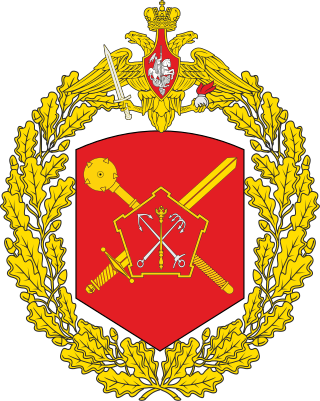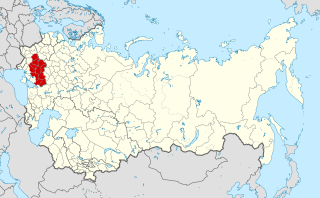| 7th Rifle Corps | |
|---|---|
| Active | 1922–1946 |
| Country | |
| Branch | Red Army |
| Type | Infantry |
| Engagements | World War II |
The 7th Rifle Corps (7th ck) was a corps in Red Army and Soviet Armed Forces, before and during The Great Patriotic War/World War II.
| 7th Rifle Corps | |
|---|---|
| Active | 1922–1946 |
| Country | |
| Branch | Red Army |
| Type | Infantry |
| Engagements | World War II |
The 7th Rifle Corps (7th ck) was a corps in Red Army and Soviet Armed Forces, before and during The Great Patriotic War/World War II.
The 11th Congress of the Russian Communist Party (Bolsheviks) adopted a resolution on the strengthening of the Red Army. It demanded to establish a strictly organized military, educational and economic conditions in the army. At the same time acknowledged burdensome for the country an army of 1,600,000 men. After the Congress, the Party Central Committee decided to reduce the Red Army at the end of 1922 to 800,000 people. Reduction of the army necessitated the restructuring of management and organizational structure of troops. The supreme military unit became a corps consisting of two or three divisions. Division consisted of three Regiments. Brigades as an independent union was abolished. In the second half of 1922 begins the construction of Rifle Corps headquarters.
By order of the Command of the Armed Forces of Ukraine and Crimea № 654/168 dated June 1, 1922, Zaporozhye in Ukrainian Military District (hereinafter UkrVO) formation of the body. In the corps entered 25th and 30th Infantry Division.
In 1923, the 80th Rifle Division joined the corps. In June 1924 the corps headquarters moved to Dnepropetrovsk. In 1925 the body was in the structure 25, 30 and 80th Rifle Division. In 1931, the body had in its composition 25, 30 and 75th Rifle Division.
On 17 May 1935, the Ukrainian Military District was divided into Kharkov and Kiev Military District. The corps became part of Kharkov Military District. On 1 July 1935, the corps included the 30th, 41st and 80th Rifle Divisions.
Corps headquarters was:
On 22 June 1941, the corps was under General Major K.L. Dobroserdov, and comprised the 116th Rifle Division – Col. Ya. F. Eremenko, the 196th Rifle Division – Maj. Gen. K. E. Kulikov, and the 206th Rifle Division – Col. Sergey Gorshkov. [1] It became part of the Southern Front on the outbreak of war. From June 22 to August 1941 the corps participated in the Soviet defence against the German Operation Barbarossa. The corps was disestablished in August 1941.
The corps was reestablished in September 1942 near Saratov. At the end of September, it was relocated to Kharabali. The corps included the 93rd, 96th and 97th Separate Rifle Brigades. [2] From October, the division fought in the Battle of Stalingrad as part of the 64th Army. After the end of the battle, it stayed in the Stalingrad area to replenish its personnel. On 19 April 1943, it became the 35th Guards Rifle Corps for its achievements in battle. [3] [4]
7th Rifle Corps was reestablished again in June 1943. The corps fought in the Battle of Berlin. [5] On 10 July 1945 the corps was part of 3rd Shock Army and comprised 146th, 265th, and 364th Rifle Divisions. The corps appears to have disbanded in July 1946. [6]
The corps had a total of six commanders from 1941 to 1945.
At 1922:
At 1923:
For 1931:
A tank corps was a type of Soviet armoured formation used during World War II.

The 6th Combined Arms Army is a field army of the Red Army and the Soviet Army that was active with the Russian Ground Forces until 1998 and has been active since 2010 as the 6th Combined Arms Army.
The 52nd Rifle Division was an infantry division of the Red Army during the Russian Civil War, the interwar period, World War II, and the Cold War, formed once during the Russian Civil War and three times during the existence of the Soviet Union.
A rifle corps was a Soviet corps-level military formation during the mid-twentieth century. Rifle corps were made up of a varying number of rifle divisions, although the allocation of three rifle divisions to a rifle corps was common during the latter part of World War II.
The 9th Army of the Soviet Union's Red Army was a Soviet field army, active from 1939 to 1943.

The Odesa Military District was a military administrative division of the Armed Forces of Ukraine. This district consisted of Moldavia and five Ukrainian oblasts of Odesa, Mykolaiv, Kherson, Crimea and Zaporizhzhia. In 1998 most of its territory was transformed into the Southern Operational Command.

The Kiev Military District was a military district of the Imperial Russian Army and subsequently of the Red Army and Soviet Armed Forces. It was first formed in 1862, and was headquartered in Kiev (Kyiv) for most of its existence.
The 78th Rifle Division was an infantry division of the Red Army, formed in 1932, in Novosibirsk, in the Siberian Military District. After being used to provide cadres for new divisions, in September 1939 the division was reformed for the second time. In 1940 the division was transferred to Khabarovsk in the Far Eastern Front.
The 80th Rifle Division was a rifle division of the Red Army, formed twice.
The 23rd Army was a Field Army of the Soviet Union's Red Army.
The 6th Rifle Corps was a rifle corps of the Soviet Union's Red Army and later the Soviet Army, formed three different times.
The 1st Army Corps was an army corps of the Soviet Armed Forces. It was formed in 1957 and finally deactivated in 1991. It draws its history from the 1st Rifle Corps, formed in 1922. Troops of the 1st Rifle Corps participated in the Winter War and World War II.
The 4th Rifle Corps was a corps of the Red Army, active from the 1920s.
The 15th Rifle Corps was a rifle corps of the Red Army, formed five times; each formation was a distinct unit unrelated to the others. It was part of the 5th Army. It took part in the Soviet invasion of Poland in 1939.
The 17th Rifle Corps was a corps of the Red Army and later the Soviet Army, formed three times.

Ivan Vasilievich Galanin was a Red Army lieutenant general during World War II.

The Kharkov Military District was a military district of the Russian Empire, the Russian Soviet Federative Socialist Republic, and the Soviet Union. Throughout its history, the district headquarters was located in the city of Kharkov in northeastern Ukraine.

Filipp Feodosyevich Zhmachenko was a Soviet Army colonel general and Hero of the Soviet Union.